Telematic Data: the Key to a Successful Energy Transition

Fleet managers are currently facing the colossal challenge of the energy transition, in order to meet legislative requirements and societal demands. For most carriers, both in the passenger transport sector and in the last mile delivery sector, this green shift has already begun.
The motivations behind this transition vary and multiply. Obviously, the preservation of the environment being at the heart of everyone’s concerns, the achievement of GHG emission reduction objectives is now necessary in order to satisfy the demands of manufacturers and governments. The green plan of road transport companies is now a factor influencing the recruitment and retention of personnel and drivers. Another decisive element that accelerates this energy transition is the historic rise in fuel costs. More than ever before, fleet managers have a major incentive to move away from their dependence on diesel fuel and its staggering costs.
Although the initial cost of an electric vehicle is between 20 and 150% more expensive than a combustion vehicle (including subsidies), in the long run it is a profitable investment. According to the DOE (Department of Energy), parity between the operation of these two types of vehicles should be reached by 2035, given the continuous technological advances. Today, although supply is still relatively low, dozens of electric truck models are available in the U.S. and Canada, and the number is growing rapidly to meet demand. For example, electric models from several manufacturers, such as Peterbilt and Kenworth, are already available for delivery in the fall of 2022.
Of course, it is normal to be unsettled considering the magnitude of this transition, which implies a major adaptation from the point of view of maintenance, recharging management, driving habits, dispatching, as well as the drivers’ resistance to change. However, with the help of telematics, a business intelligence platform and specialized support, it is possible to successfully electrify your fleet.
Here are a few crucial steps in developing an effective action plan based on an accurate analysis of your telematics data:
1- Establish objectives and appoint a committee including your telematics partners, your equipment suppliers, experienced managers regarding your operations, your clientele and your drivers.
2- Analysis of current fleet data (types of trips, distances, speeds, elevations, loads, weights, stops, length of stops, wait times, detention times, hours of service trends, operating temperatures, seasonality, fleet inventory, fleet growth trends)
3- Establishment of realistic short, medium and long term GHG emission reduction targets, including an inventory of clients’ zero carbon requirements and their own strategies.
4- Recommendations and actions to optimize energy consumption of current equipment (energy-efficient driving, preventive maintenance, reduction of idling, all other recognized measures for fuel optimization).
5- Planning and availability by stage of energy deployment, power demand and availability of the customer’s infrastructure and its customers.
6- Availability of equipment according to the evolution of availability. Consideration of natural gas type engines or other energy as a temporary alternative.
7- Planning of recharging operations via integration of the various telematics / dispatching (TMS) / ERP / kiosks or other infrastructures.
8- Reception of the first equipment, training of drivers in energy-efficient driving.
9- Close monitoring of the pilot (consumption trends, challenges, reorganization).
By wisely exploiting your telematics data and by putting at the service of your company a business intelligence platform such as Lighthouse, the exclusive solution developed by the AttriX team, you will be able to carry out the progressive electrification of your fleet. Here are some examples of what using such a platform can do for you :
- Simplify the analysis and decision making regarding the electrification of your trucks.
- Identify any vehicle in your fleet that meets the criteria for substitution by an electric equivalent.
- Analyze frequent stops, identify and qualify charging opportunities on the road.
- Benefit from a complete management tool for the fleet’s electric vehicles.
- Accurately track electric vehicle performance and changes in battery charge levels.
- Supports over 200 EV models including GM, Lion, Volvo, BYD and Tesla.
- Identify and estimate the potential fuel and GHG emission reductions for each vehicle that can be achieved through eco-driving practices or eco-trucking subsidized features.
In other words, it is essential to be well-equipped to effectively begin the electrification and energy optimization of your fleet. One of the most useful and profitable solutions for these purposes is definitely telematics and the data intelligence it holds on your operations. Properly exploited, your data will allow you to establish an eco-responsible strategy, thanks to which you will be able to decarbonize your operations, remain competitive, innovate, save money in the long term and make your company shine.
Did you know?
The use of a gamification and motivation solution for eco-responsible driving for drivers can lead to a significant reduction in fuel consumption or an important increase in autonomy in the case of an electric vehicle. The Driver Challenge, designed by AttriX, has indeed demonstrated gains of up to 19% in fuel savings and reaching a reduction of 27% Kw/h for an electric fleet.
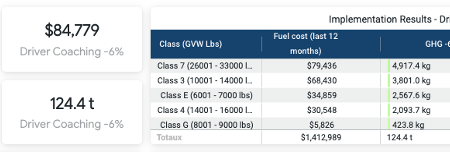
Continue reading on this subject

The challenges of designing a 40-tonne, 100% electric mining vehicle for open-pit mines
Partnerships and implications The partners involved in the development of a 100% electric Quebec mining vehicle were all eager to be involved with the project from the outset, for a variety of reasons. NRC’s Eddy Zuppel explained their contribution: “Before starting the project, it was important to model and simulate the vehicle’s route in order […]
Read more
Energy efficiency: Financial support to put your ideas into action
Leading a company involves balancing several priorities at the same time. Energy efficiency? It’s an important issue—one of many! What if we gave you what you need to make energy efficiency a driving force behind your company’s performance and profitability? The good news is, Hydro-Québec offers financial assistance and guidance to help you balance performance and energy efficiency.
Read more
My Consumption Profile: data that lets you strategically manage your electricity use
Companies have a critical role to play in the energy transition. Knowing that energy efficiency factors big into profitability, your organization will benefit from strategically managing its electricity use. The key? Your data!
Read more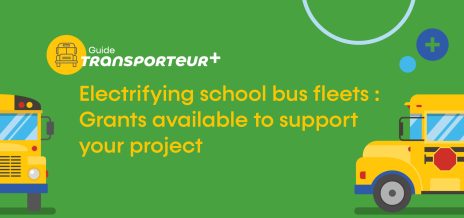
Electrifying school bus fleets : Grants available to support your project
In this series of articles, we demystify the key steps of converting your school bus fleet to electric power thanks to the Transporteur+ guide. This guide aims to provide easy and direct access to resources to clarify the steps, issues, conditions and facilitating measures for a successful transition to electrification.
Read more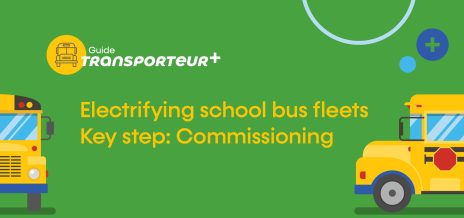
Electrifying school bus fleets | Key step : Comissioning
In this series of articles, we demystify the key steps of converting your school bus fleet to electric power thanks to the Transporteur+ guide. This guide aims to provide easy and direct access to resources to clarify the steps, issues, conditions and facilitating measures for a successful transition to electrification.
Read more
FINANCING | $50 million from Finalta Capital in non-dilutive financing dedicated to the Electric and Smart Transportation sector
Fast growing, innovative companies from the electric and smart transportation (EST) sector in Québec take advantage of the $50 million in funding dedicated to the EST ecosystem by Finalta Capital, one of Canada’s largest funds specialized in non-dilutive tax credit and government grant financing, announced in March 2023 as part of the Impulsion conference, the International EST Summit organized by Propulsion Québec.
Read more
Demand response: Save money by using hydro at the right times
If you could lower your company's hydro bill while contributing to the collective effort to support Quebec’s energy transition, would you? Yes, most likely! How? By curbing power demand for buildings and equipment during peak demand events.
Read more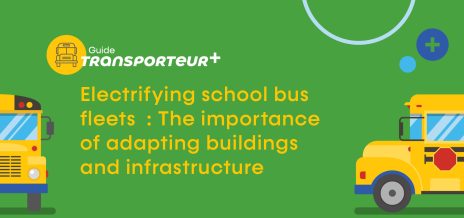
Electrifying school bus fleets : The importance of adapting buildings and infrastructure
In this series of articles, we demystify the key steps of converting your school bus fleet to electric power thanks to the Transporteur+ guide. This guide aims to provide easy and direct access to resources to clarify the steps, issues, conditions and facilitating measures for a successful transition to electrification.
Read more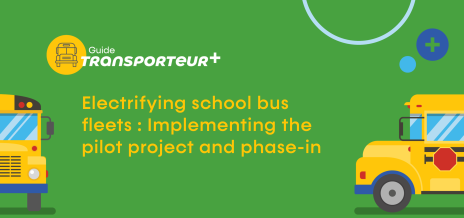
Electrifying school bus fleets : Implementing the pilot project and phase-in
In this series of articles, we demystify the key steps of converting your school bus fleet to electric power thanks to the Transporteur+ guide. This guide aims to provide easy and direct access to resources to clarify the steps, issues, conditions and facilitating measures for a successful transition to electrification
Read more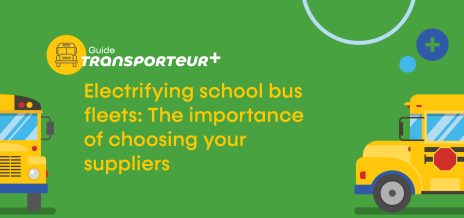
Electrifying school bus fleets: The importance of choosing your suppliers
In this series of articles, we demystify the key steps of converting your school bus fleet to electric power thanks to the Transporteur+ guide. This guide aims to provide easy and direct access to resources to clarify the steps, issues, conditions and facilitating measures for a successful transition to electrification.
Read more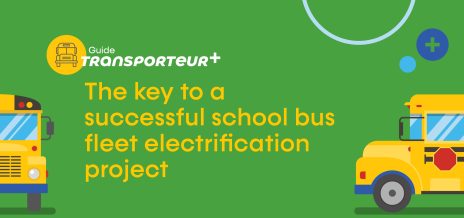
The key to a successful school bus fleet electrification project
In this series of articles, we demystify the key steps of converting your school bus fleet to electric power thanks to the Transporteur+ guide. This guide aims to provide easy and direct access to resources to clarify the steps, issues, conditions and facilitating measures for a successful transition to electrification.
Read more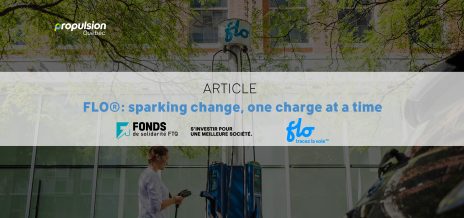
FLO®: sparking change, one charge at a time
FLO became a leader in electric vehicle (EV) charging in North America by integrating the process from start to finish: manufacturing charging stations, developing software and managing its network. To stay ahead of the curve in a fast-moving, innovation-driven market, the company turned to the Fonds de solidarité FTQ to support its growth.
Read more




